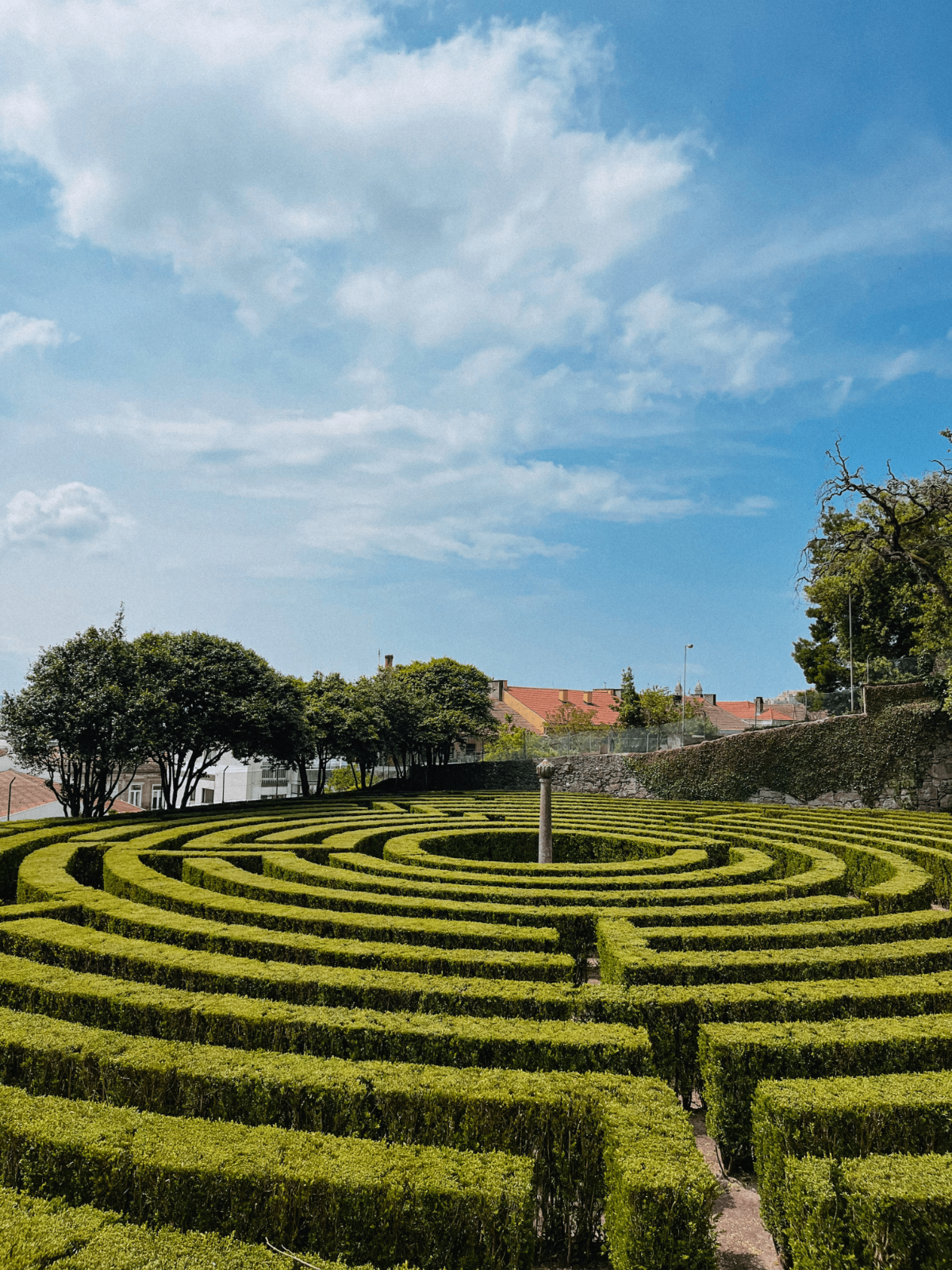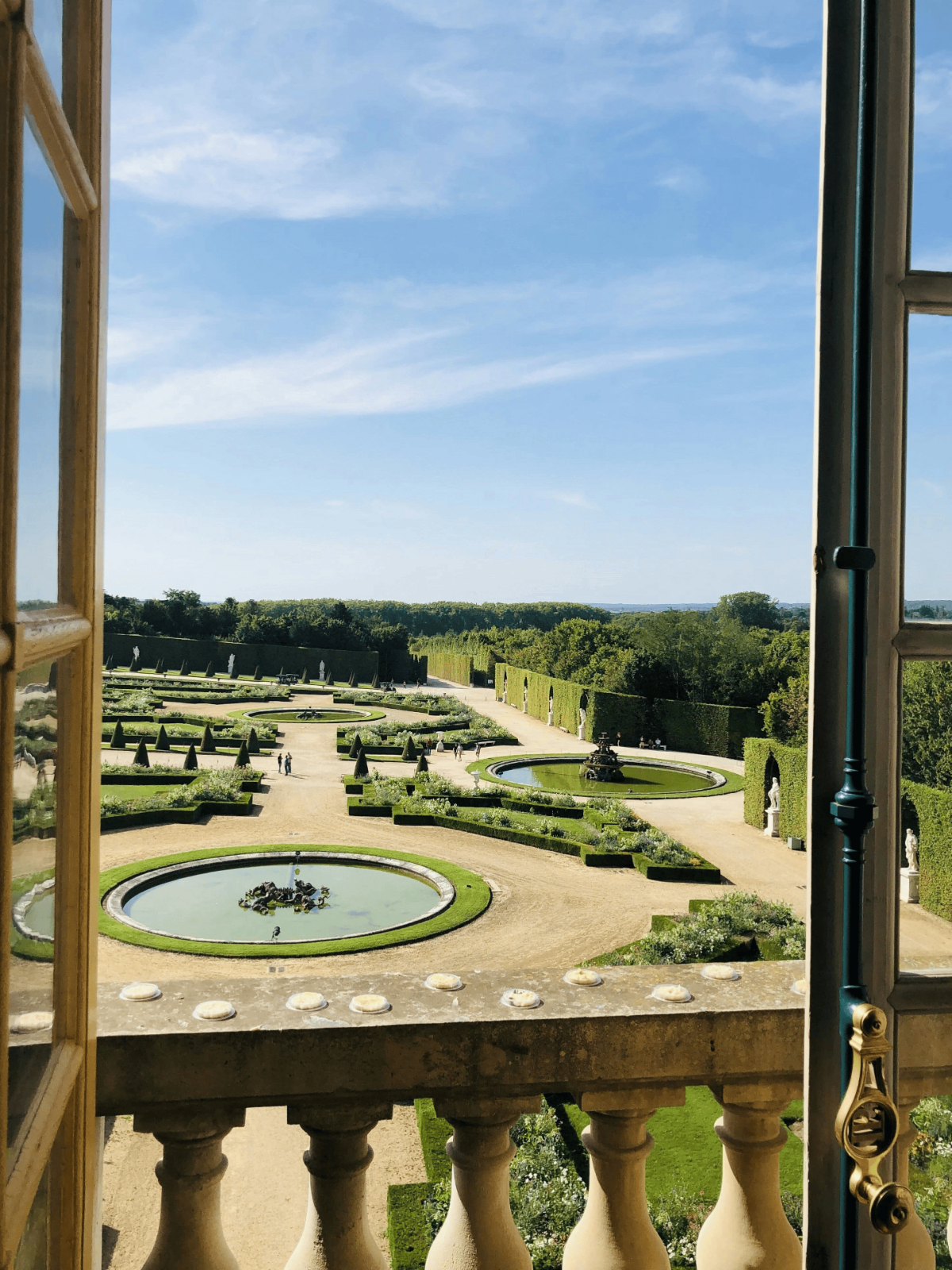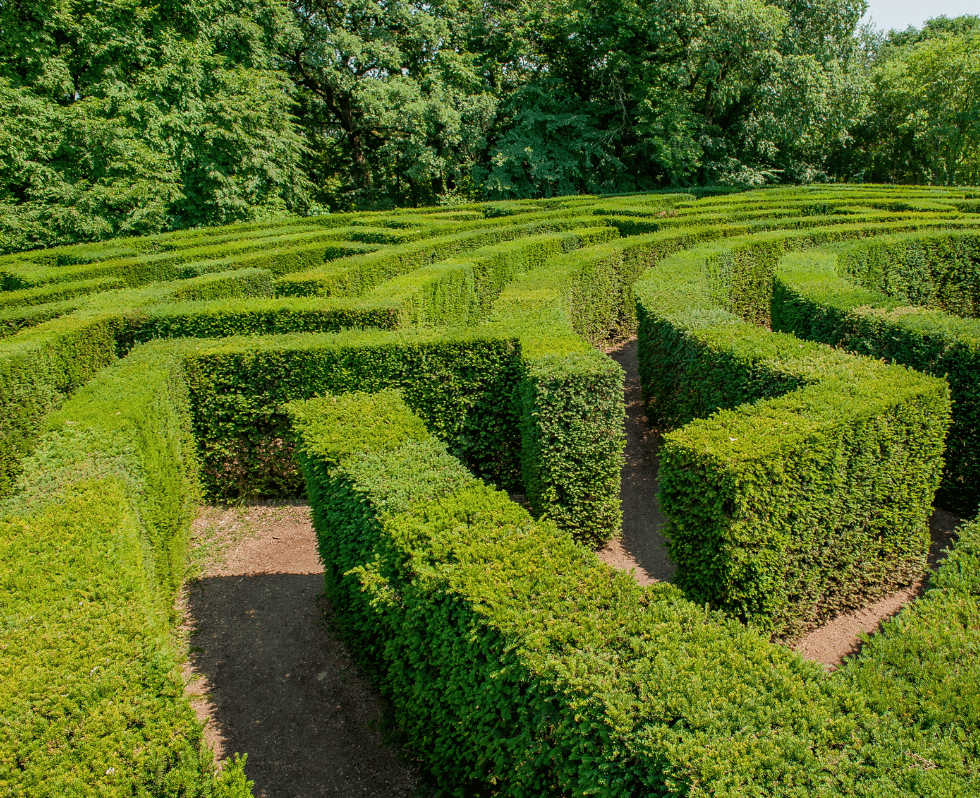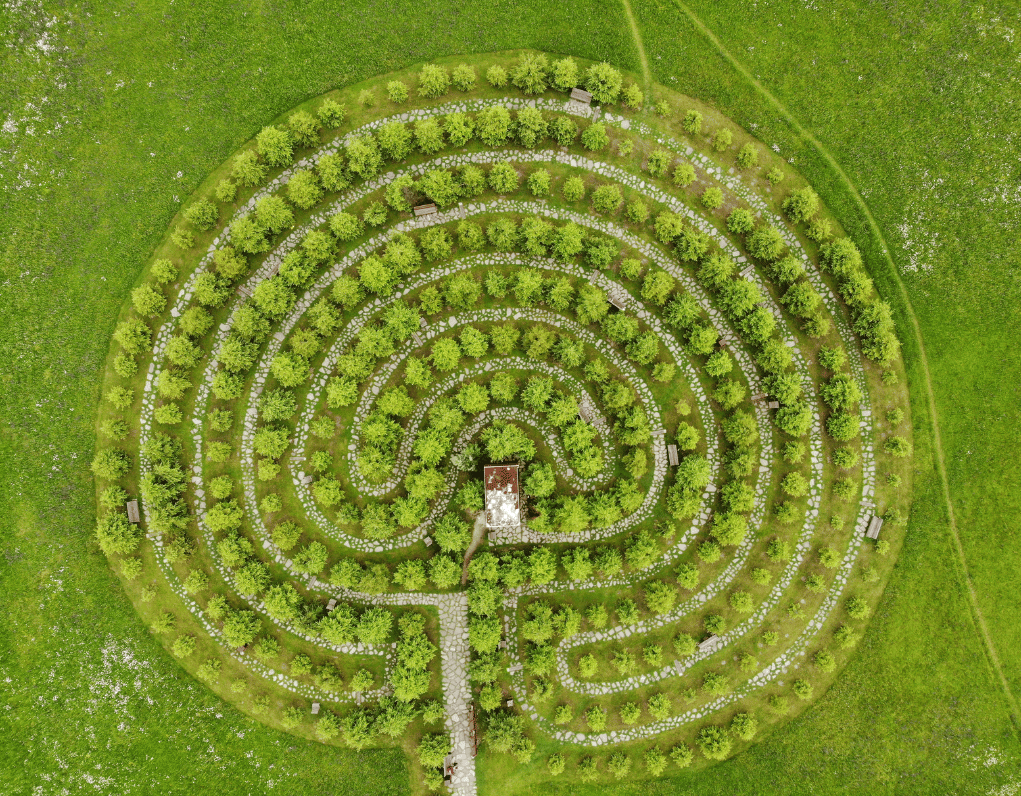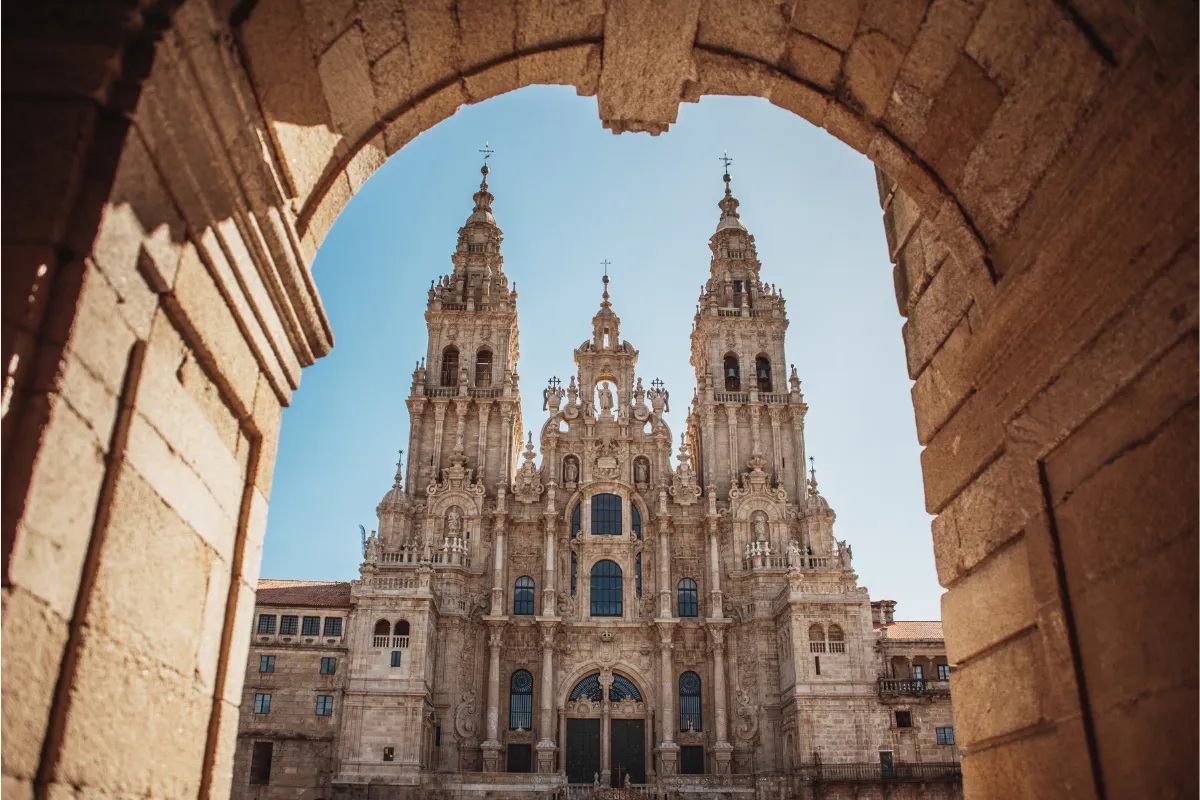Labyrinth Walking Meditation: Benefits for Stress Relief
Last update October 30, 2025
Discover how a single circuit of labyrinth walking blends 4 000-year tradition with modern mindfulness to lower stress, spark creativity, and restore balance.
A single winding line, open to sky and stone, invites you to leave the noise behind. Labyrinth walking is less a destination than a slow conversation between breath, earth, and heartbeat. Unlike a maze, built for clever turns and blind alleys, the labyrinth offers only one path. As each curve carries you closer to the center, then back to the outer edge, body and mind fall into rhythm: step, inhale, exhale, release. In this gentle walking meditation, stress slips away, creativity stirs, and a quiet sense of “enough” settles in. Within Terra Selene’s Expand pillar, this ancient practice of labyrinth walking becomes a modern antidote to busy life, a mini-pilgrimage you can complete in a single circuit. This practice is one of many somatic modalities that restore the nervous system through rhythmic, body-based awareness.
Table of Contents
Affiliate Disclosure
Some links in this post are affiliate links. That means we may earn a small commission, at no additional cost to you, if you choose to make a purchase. These are always brands, stays, or experiences we would recommend to a dear friend. Thank you for supporting the quiet sustainability of Terra Selene.
Ancient Origins & Global Roots
The English word “labyrinth” ultimately traces back to the Lydian term labrys, a double-headed axe that palace craftsmen used to create royal ritual symbols in Bronze-Age Anatolia, before the idea migrated into Greek and lodged in the myth of King Minos’ palace at Knossos, where Theseus braved the winding structure to find answers in the darkness and face the Minotaur.
Long before Homeric epics, archaeologists have identified true labyrinth motifs dating back 4,000 years or more: Old Babylonian clay tablets, Scandinavian rock faces, Hopi pottery, and Indian temple walls all preserve the same seven-circuit design, testifying to its pull across ancient traditions. By the Middle Ages, Gothic master-masons embedded an elaborate limestone labyrinth,12.9 m across with a 261 m walking line, into the nave of Chartres Cathedral (c. 1200 CE). Contemporary sermons called it a “Chemin de Jérusalem,” allowing pilgrims to enact a symbolic journey to the Holy City when actual travel proved impossible.
Across continents and millennia, every authentic labyrinth shares one unmistakable trait: a single, visible path with no dead ends or wrong turns. That clarity frees walkers from navigation, inviting them to turn inward, whether to settle the breath, spark creativity, or seek their own answers, while the winding line does the guiding.
Labyrinth vs. Maze: Why One Path Matters
Mazes are puzzles. They use high hedges and hidden corners to confuse, demanding sharp decisions and frequently punishing them with blind alleys. A labyrinth is the opposite. Its single, visible route removes the fear of error. Because orientation is guaranteed, attention can rest on breath, heartbeat, and the subtle drift of thoughts. This shift from external problem-solving to internal observation is why a simple circuit can loosen a century’s worth of tension.
Walking the Labyrinth: How One Circuit Soothes Body, Mind & Spirit
To walk a labyrinth is to engage in active meditation: one gentle curve draws you inward, the next releases you outward, mirroring life’s own ebb and flow. Because there is only one path, no right or wrong way to proceed, the brain relaxes, freeing attention to sync breath and gait. Modern studies on walking meditation show lowered cortisol, smoother heart-rate variability, and measurable stress reduction; in a labyrinth these benefits deepen as the mind is spared the effort of constant choice. The rhythmic pacing becomes an embodied prayer, integrating body, mind, and spirit without the stillness that some find challenging in seated practice.
Many walkers describe surprising flashes of creativity, buried memories surfacing, or a renewed sense of balance, while others simply register a long exhale and a quiet mind, invaluable in an age of constant alerts. Whether you treat the journey as a private retreat, a walking prayer, or a pocket of silence carved from a noisy day, one circuit offers enough space for release, reflection, and return, leaving you calmer, clearer, and more fully present.
Three Phases of the Walk
Release (Walking In). As you trace the inward circuits, allow distractions, worries, and the chatter of busy life to fall away. Each deliberate step is an invitation to drop mental weight.
Receive (Centre). The heart of the labyrinth is a still point. Pause here, whether for prayer, reflection, gratitude, or simply an unhurried breath.
Return (Walking Out). Retrace the same path in reverse, integrating whatever insights surfaced. Emerging at the threshold often feels like crossing from timelessness back into time, yet with a refreshed perspective.
A classic seven-circuit labyrinth takes roughly thirty minutes at an unhurried stride, though the duration is secondary to the depth of presence.
Classic Designs You May Encounter
The Cretan, or classical, labyrinth remains the benchmark labyrinth design: seven nested circuits that trace a continuous meander seen on Bronze-Age coins, pottery, and temple floors across the Mediterranean. Its circuitous way begins at the outer edge, sweeps you close to the center, then flings you back toward the rim again and again until, almost unexpectedly, you arrive at the still point in the middle.
The Chartres labyrinth (c. 1200 CE) expands that same idea into eleven circuits arranged within a perfect circle 12.9 m wide. Medieval builders overlaid a cruciform pattern and a six-petal rosette, turning the walk into a symbolic pilgrimage, 261 m of slow steps that once stood in for the long road to Jerusalem.
Other historic templates include the Roman square labyrinth, which divides the path into orthogonal quarters like a tiled mosaic, and the stone “Trojaborg” rings of the Baltic coast, where fishers walked the winding lines to charm fair winds. Contemporary artists riff on all of these archetypes, laying turf, casting concrete, or printing portable canvas mats, yet each new iteration preserves the defining promise of a single, unbroken path whose gentle turns invite breath, focus, and reflection.
From Stress Relief to Creative Spark
Labyrinth walking is an ancient, drug-free remedy that meets 21st-century mental-health needs head-on. Because the direction is predetermined, the brain’s default-mode network, an area tied to daydreaming, imagination, and insight, switches on. In practical terms, many writers, entrepreneurs, and designers step out of walking labyrinths with notebook pages of fresh concepts. Therapists lean on the path’s gentle containment to help clients process grief, trauma, or burnout: emotions surface, move, and exit just as the walker does.
Yet the benefits run deeper than inspiration. Labyrinth walking integrates body, breath, and attention into a single fluid motion, triggering the parasympathetic “rest-and-digest” response that lowers cortisol, steadies heart rhythms, and calms racing thoughts. Unlike seated practices that some find restless, the meditative aspects of walking encourage meditation through movement; you stay grounded in physical sensation while the mind unwinds.
Because there is no right or wrong way to proceed, each person sets their own pace. This autonomy is powerful: choosing slow, mindful steps reinforces agency and self-compassion, key pillars of sustainable well-being. Over time, regular practice restores balance, nurtures self-reflection, and rekindles the child-like curiosity often lost to adulthood.
Viewed through Terra Selene’s lens of conscious living, a labyrinth becomes a reliable watering hole for the soul, an accessible, holistic alternative to pharmaceuticals or screen-based coping. It is a living thread from ancient traditions to modern self-care: a natural ritual you can weave into daily life whenever focus feels scattered or the world grows loud.
Conclusion
In a culture racing along straight lines, the labyrinth teaches the grace of the spiral. It reminds us that progress rarely happens in a single decisive leap; instead, we turn, double back, drift closer, drift away, and finally arrive, only to begin again with new understanding. When life resembles a maze of competing choices, placing one intentional step on a visible, singular path can bring peace, perspective, and a renewed sense of creative energy in the span of a single slow, deliberate circuit.
Next time the world feels too fast, seek a labyrinth, stone, grass, or the quiet spiral traced by a fingertip on paper, and let its ancient geometry guide you home to the present moment. To further explore sensory-based methods that ground and recalibrate, we invite you into our mind-body restoration guide.

